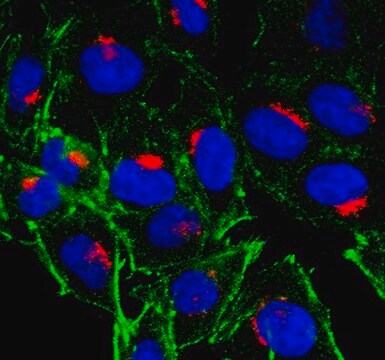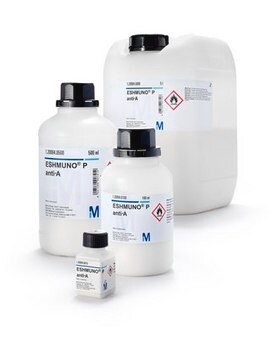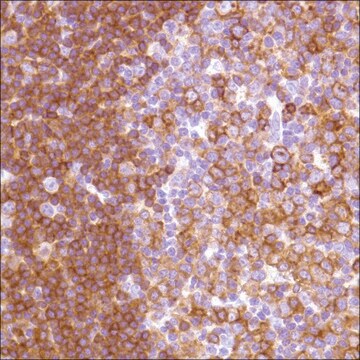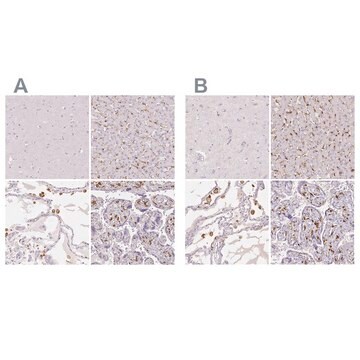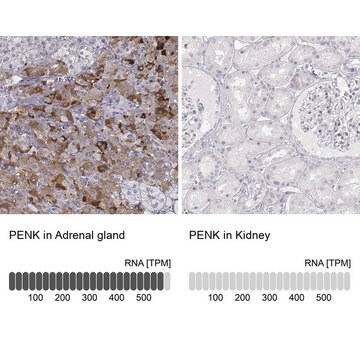GW21444
Anti-M6PR antibody produced in chicken
affinity isolated antibody, buffered aqueous solution
Synonym(s):
Anti-Cation-dependent mannose-6-phosphate receptor
Sign Into View Organizational & Contract Pricing
All Photos(1)
About This Item
UNSPSC Code:
12352203
NACRES:
NA.41
Recommended Products
biological source
chicken
Quality Level
conjugate
unconjugated
antibody form
affinity isolated antibody
antibody product type
primary antibodies
clone
polyclonal
form
buffered aqueous solution
species reactivity
mouse, human, rat
manufacturer/tradename
Genway 15-288-21444
technique(s)
immunocytochemistry: suitable
western blot: suitable
NCBI accession no.
UniProt accession no.
shipped in
wet ice
storage temp.
−20°C
target post-translational modification
unmodified
Gene Information
human ... M6PR(4074)
Immunogen
Immunogen Sequence: GI # 4505061, sequence 60-114
Recombinant cation-dependent mannose-6-phosphate receptor
Application
Anti-M6PR antibody produced in chicken is suitable for immunocytochemistry and western blotting analysis at a dilution of 1:500, for tissue or cell staining at a dilution of 1:200.
Biochem/physiol Actions
Mannose 6-phosphate receptor is an integral transmembrane glycoprotein encoded by the M6PR gene in humans. It is ubiquitously expressed and are distinguished from all other lectins by their ability to recognize phosphorylated mannose residues. It is a 46kDa cation-dependent mannose 6-phosphate receptor (CD-MPR) and plays a key role in the delivery of lysosomal enzymes to the lysosome by binding newly synthesized mannose 6-phosphate (Man-6-P)-containing acid hydrolases and diverting them from the secretory pathway. M6PR plays a major role in cellular function by transporting Man-6-P-containing acid hydrolases from the Golgi to endosomal/lysosomal compartments.
Physical form
Solution in phosphate buffered saline containing 0.02% sodium azide.
Disclaimer
Unless otherwise stated in our catalog or other company documentation accompanying the product(s), our products are intended for research use only and are not to be used for any other purpose, which includes but is not limited to, unauthorized commercial uses, in vitro diagnostic uses, ex vivo or in vivo therapeutic uses or any type of consumption or application to humans or animals.
Not finding the right product?
Try our Product Selector Tool.
Storage Class Code
10 - Combustible liquids
WGK
WGK 1
Flash Point(F)
Not applicable
Flash Point(C)
Not applicable
Personal Protective Equipment
dust mask type N95 (US), Eyeshields, Gloves
Choose from one of the most recent versions:
Already Own This Product?
Find documentation for the products that you have recently purchased in the Document Library.
G G Sahagian et al.
The Journal of biological chemistry, 260(17), 9838-9842 (1985-08-15)
The mannose 6-phosphate (Man-6-P) receptor is an integral membrane glycoprotein which mediates intracellular transport and receptor-mediated endocytosis of lysosomal proteins. Clathrin-coated vesicles, which have been shown to be significantly involved in these processes, have also been shown to be a
Shelby C Bearrows et al.
Journal of cell science, 132(13) (2019-06-12)
Chromogranin B (CgB, also known as CHGB) is abundantly expressed in dense core secretory granules of multiple endocrine tissues and has been suggested to regulate granule biogenesis in some cell types, including the pancreatic islet β-cell, though the mechanisms are
Jung-Ja P Kim et al.
Current opinion in structural biology, 19(5), 534-542 (2009-10-06)
The two P-type lectins, the 46kDa cation-dependent mannose-6-phosphate (Man-6-P) receptor (CD-MPR), and the 300kDa cation-independent Man-6-P receptor (CI-MPR), are the founding members of the growing family of mannose-6-phosphate receptor homology (MRH) proteins. A major cellular function of the MPRs is
Seii Ohka et al.
Biology open, 11(9) (2022-08-06)
Enterovirus 71 (EV71) is one of the causative agents of hand-foot-and-mouth disease, which in some circumstances could lead to severe neurological diseases. Despite of its importance for human health, little is known about the early stages of EV71 infection. EV71
Linda J Olson et al.
Biochemistry, 49(1), 236-246 (2009-11-26)
The 46 kDa cation-dependent mannose 6-phosphate receptor (CD-MPR) plays a key role in the delivery of lysosomal enzymes to the lysosome by binding newly synthesized mannose 6-phosphate (Man-6-P)-containing acid hydrolases and diverting them from the secretory pathway. Previous studies on
Our team of scientists has experience in all areas of research including Life Science, Material Science, Chemical Synthesis, Chromatography, Analytical and many others.
Contact Technical Service

